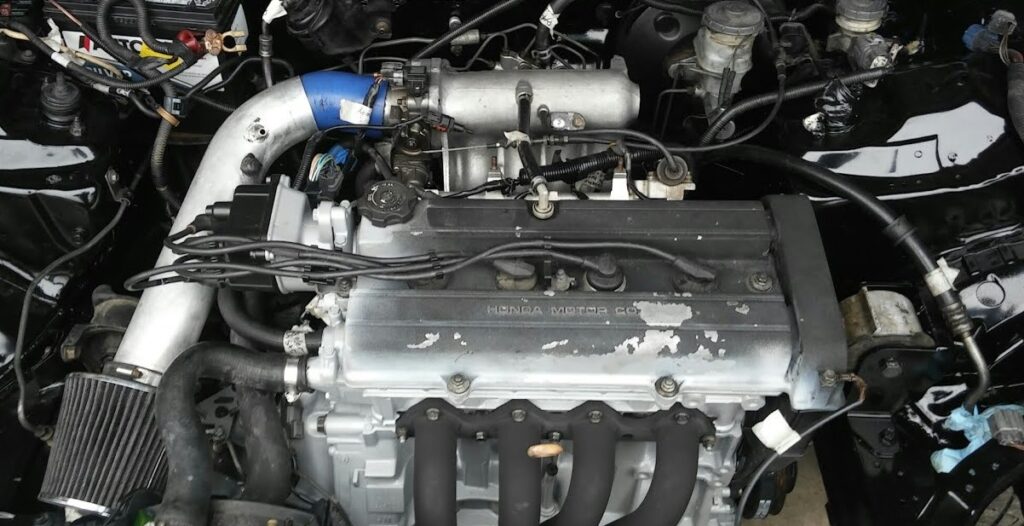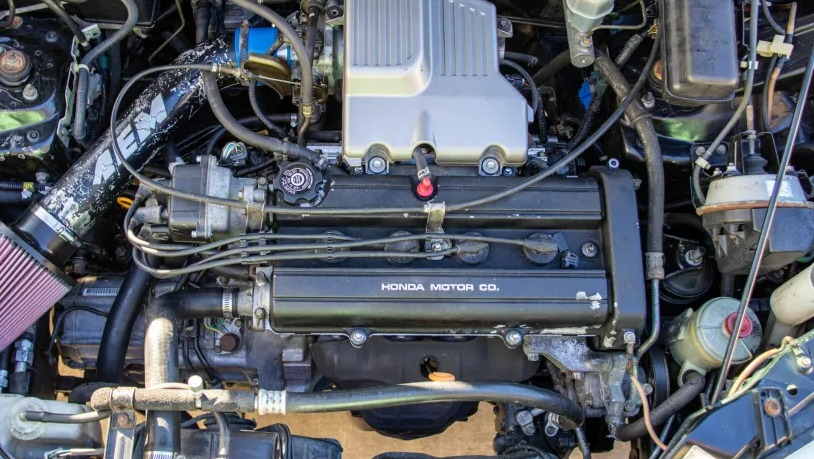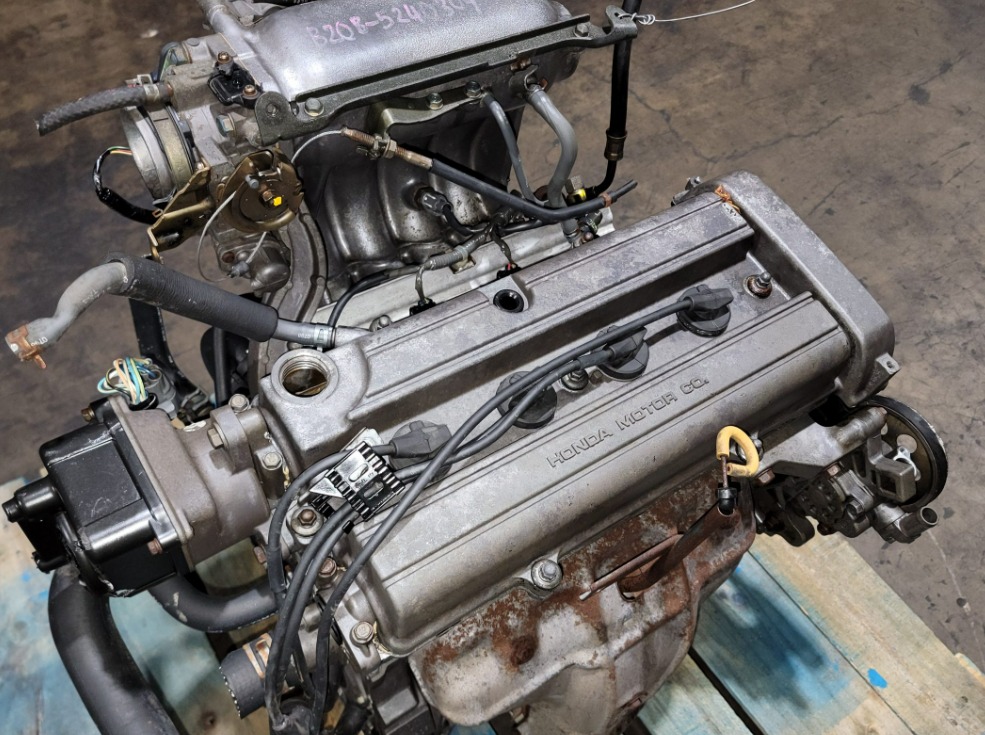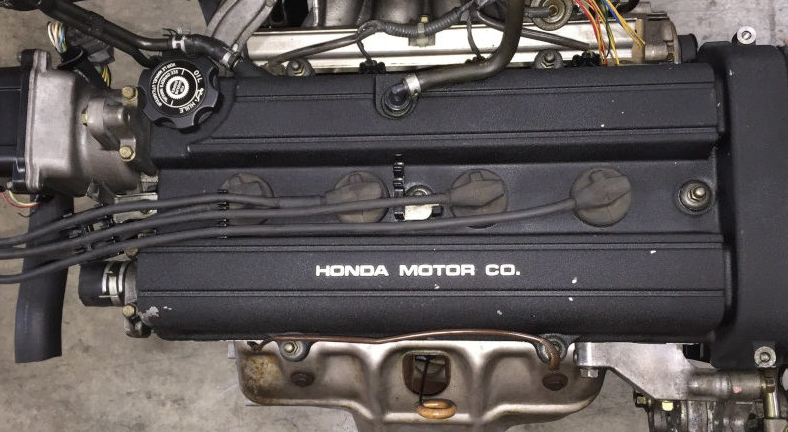The Honda B20B engine is a four-cylinder inline DOHC engine. The B series was first introduced in 1988 by Honda. In line with today’s technology, it is capable of producing high horsepower and excellent fuel economy. Moreover, it is highly reliable and durable.
Non-VTEC variant
The B20b engine is a naturally aspirated engine found in Honda’s B-Series cars. It has a block made from aluminum with cast iron cylinder liners and 16-valve, non-VTEC belt-driven double overhead cams. The first generation of B20Bs were only able to achieve 126 horsepower, but later models were able to achieve 150 horsepower and 140 lb-ft of torque. This engine has a redline of 6,500 RPM and has a compression rating of 8.8.

This engine series has evolved over the years and is available in many car models. The original B20A was first seen in the Honda Prelude S and Si, and it was later adapted into the Honda CR-V. Both versions feature the same engine block but are fitted with different cylinder head and intake manifold designs.
The non-VTEC variant of the B20B engine is a 2.0L engine that is capable of producing 126 to 150 horsepower. It’s important to make sure that you choose the right version for your car, as each variation has its own power output and specs.
Power output
The Honda B20B engine was introduced in Japan in 1995. It is found in JDM Honda Orthia and CR-V models. It had a lower power output than previous models, but had greater torque capabilities. However, this shortcoming was compensated by its larger displacement, which enabled car tuners to create ‘Frankenstein’ engines. Several modders have since learned how to extract more power and torque from the B20. The process of building a B20 VTEC motor is fairly simple and is similar to the process used for an LS/VTEC conversion.

The B20 engine can be tuned to make up to 15% more power. This is done by adding more air and fuel to the cylinders. The air is drawn into the suck phase of the engine and mixes with the fuel in the cylinders. The design of the intake plays an important role in how the air and fuel mix. If the plenum chambers are too small, this can make a difference in the engine’s torque.
The B20 engine is generally a good unit that is relatively trouble-free. However, a B20 engine needs to be properly maintained and serviced to get the most out of it. Carbon build-up can rob the power from the engine and create flat spots, reducing performance. However, this can be easily remedied and the engine can be brought back to life.
Reliability
The B20 series of engines is considered to be a reliable choice for the everyday commuter. They are solid units that do not have a great deal of issues, but the B20B engine needs regular servicing and maintenance to function well. It also needs to be checked for carbon buildup, which can cause flat spots and decrease power. Fortunately, there are some easy ways to clean the carbon out of your engine.

The B20B engine was released in Japan in 1995 and was used in the JDM Honda CR-V and Orthia. There are two variants of the B20, the first rated at 150 horsepower and ended production in 2002. The redline for the B20B is 6,500 RPM. The JDM version has higher compression pistons than the USA-spec B20. Its performance is better than many American engine options.
Another notable improvement is the closed-deck block. This type of block is superior in terms of strength. It’s not as sensitive to overboost than an N20, but it’s more durable.
Carburetor armament
The B20B engine has similar characteristics to the B16/B18 series and the B20Z engine. Its primary function is to produce air and fuel for combustion. While the B20B shares many characteristics with these models, some of its characteristics are unique.
Its production range includes single and dual carburettor versions. The former has a higher compression ratio than the latter, which is suitable for a small engine. The B20A and B20B engines were later replaced by the B20E and B20F versions, which were designed to produce less emissions. In addition, these versions featured larger intake/exhaust ports and valves. They also switched from D-Jetronic to mechanical K-Jetronic fuel injection.

I like the helpful information you provide in your articles.
I’ll bookmark your blog and check again here regularly.
I am quite sure I will learn many new stuff right here! Best of luck for the next!
The players matched the five wnite balls and a red ball from the Wednesday draw.
Hi, all the time i used to check weblog posts here in the early hours in the
break of day, since i love to find out more and more.
I will right away grab your rss feed as I can’t to find your e-mail subscription hyperlink or
newsletter service. Do you have any? Please permit me recognize in order that I may
just subscribe. Thanks.
I blog quite often and I really appreciate your information. Your article has truly peaked my interest.
I will bookmark your blog and keep checking for new details about once per week.
I opted in for your Feed too.
Powerball is played in 45 states plus Washington, D.C., the U.S.
Wonderful site. A lot of helpful info here. I’m sending it to a
few pals ans additionally sharing in delicious. And naturally, thank you to your sweat!